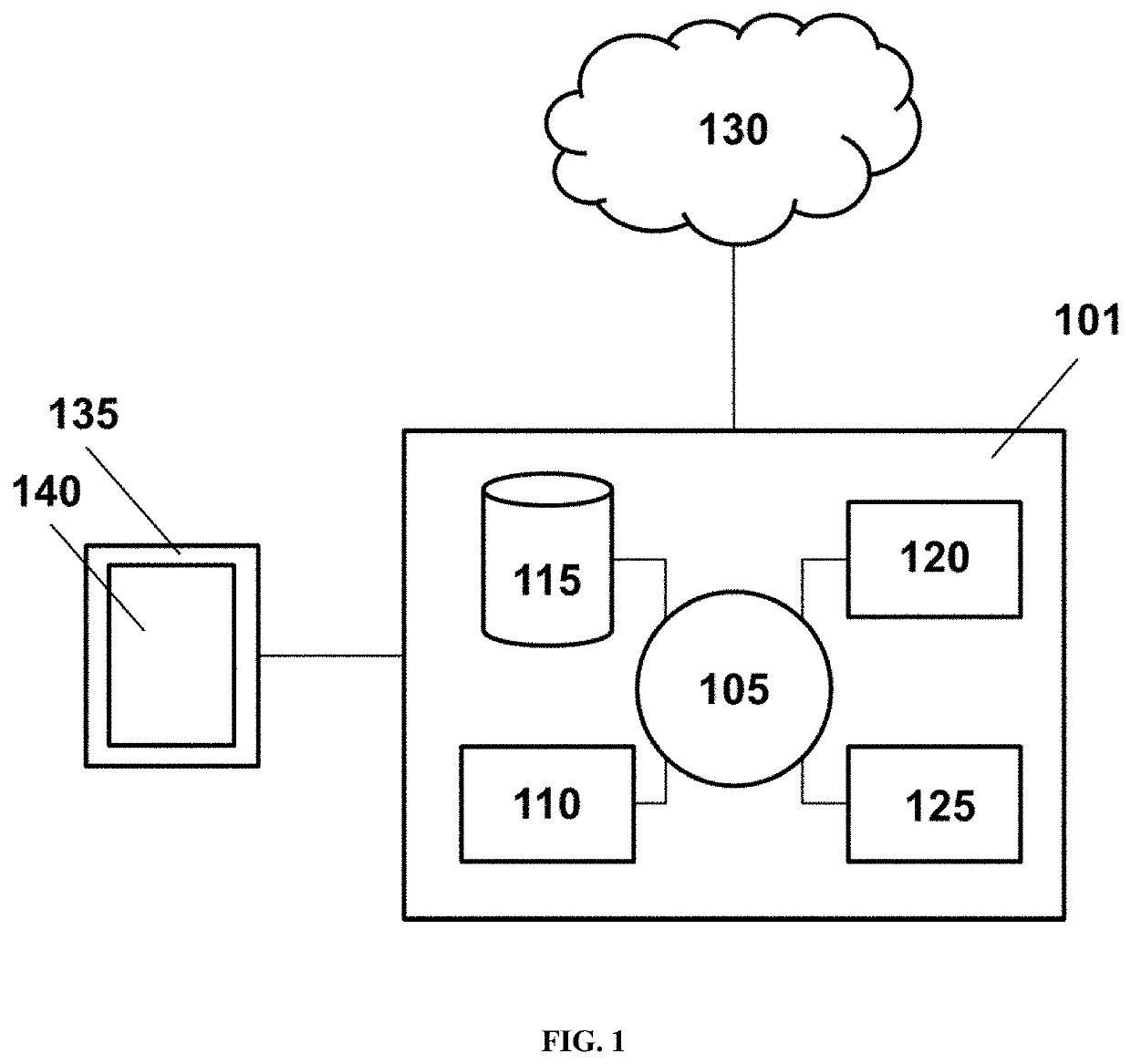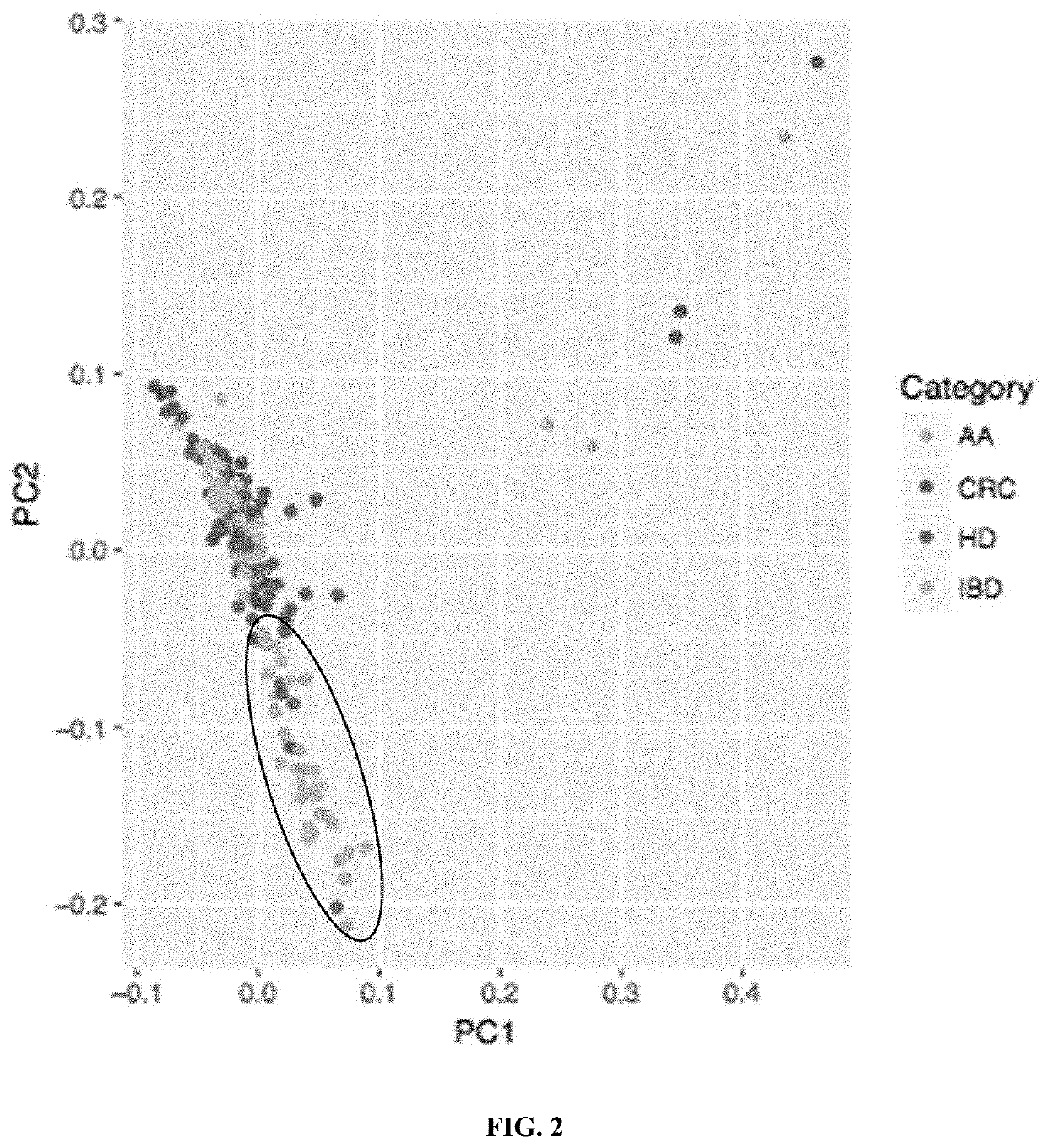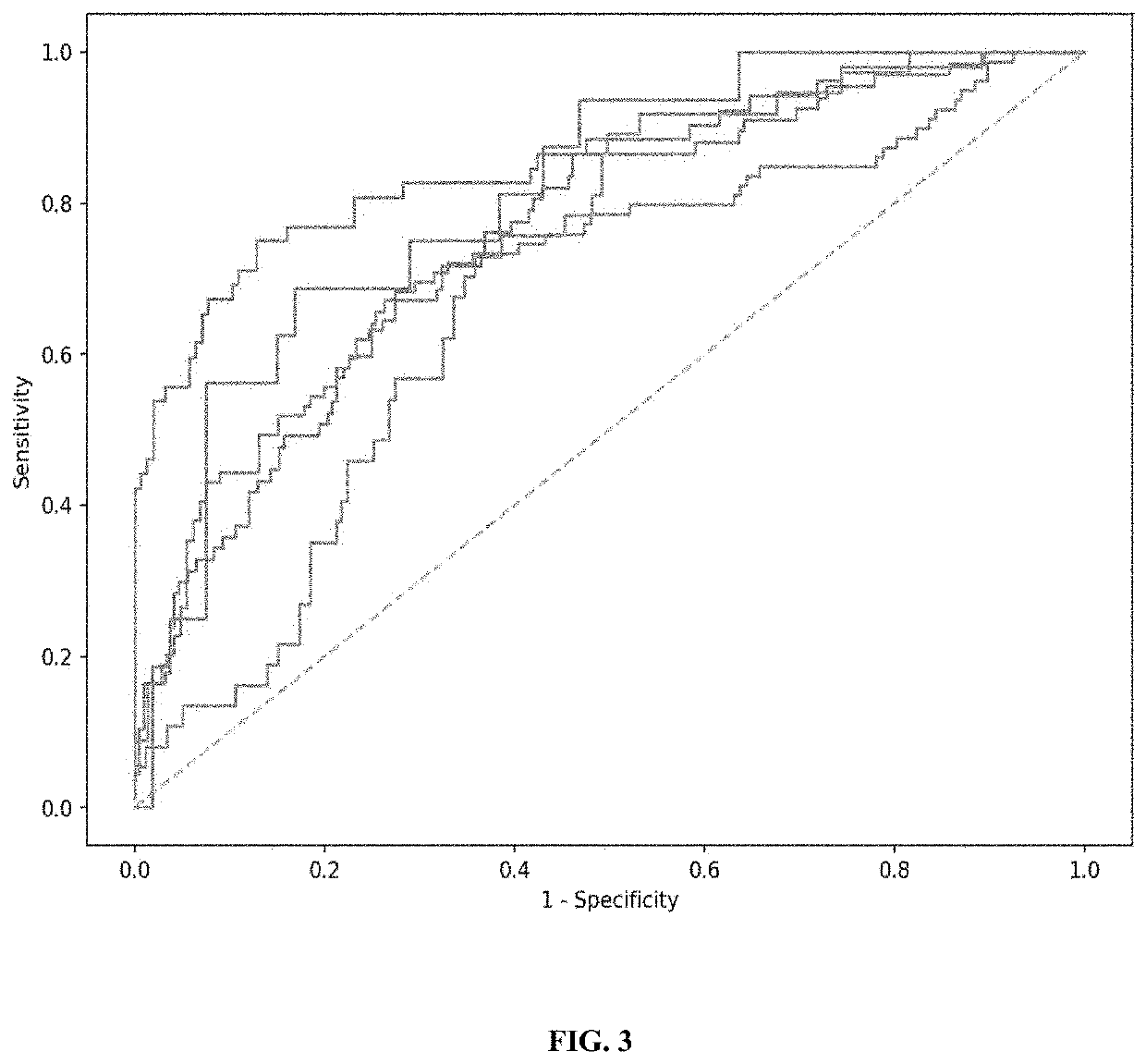Methods and systems for analyzing microbiota
a microbiota and microorganism technology, applied in biochemistry apparatus and processes, instruments, ict adaptation, etc., can solve the problems of limited understanding of environmental factors that influence cancer susceptibility and progression, limited application of total colonoscopy for early whole population screening, and high cost and invasiveness of current methods of using gut microbiota as disease indicators
- Summary
- Abstract
- Description
- Claims
- Application Information
AI Technical Summary
Benefits of technology
Problems solved by technology
Method used
Image
Examples
example 1
[0267]Methods of using principal component analysis to detect advanced adenoma in cfDNA samples in a population.
[0268]A principal component analysis (PCA) was used to assess the performance of the disclosed methods of detecting advanced adenoma in a population (e.g., versus colorectal carcinoma and healthy samples).
[0269]To generate a set of training data, cell-free DNA samples were obtained from four groups of subjects: a first group of subjects with advanced adenoma (AA), a second group of subjects with colorectal carcinoma (CRC), a third group of healthy donors (HD), and a fourth group of subjects with inflammatory bowel disease (IBD). Healthy donor samples were obtained from healthy subjects, or subjects who do not have or have not been diagnosed with any of the above indications. The cell-free DNA samples were processed through plasma isolation, cfDNA extraction, sequencing library preparation, and deep whole genome sequencing to obtain data comprising nucleic acid sequences.
[0...
example 2
[0276]Methods to detect colorectal cancer in cfDNA samples in a population.
[0277]A principal component analysis (PCA) is used to assess the performance of the disclosed methods of detecting colorectal cancer (CRC) in a population (e.g., vs. healthy samples).
[0278]To generate a set of training data, cell-free DNA samples are obtained from subjects having colorectal cancer. Healthy donor (HD) cell-free DNA samples are obtained from healthy subjects, or subjects who do not have or have not been diagnosed with colorectal cancer. The cell-free DNA samples are processed through plasma isolation, cfDNA extraction, sequencing library preparation, and deep whole genome sequencing to obtain data comprising nucleic acid sequences.
[0279]The nucleic acid sequences are mapped to a human reference genome GrCH38, and the mapped sequences are removed from analysis. The unmapped sequences, which are of presumptive microbiome content in the sample, are isolated for further analysis. The BWA alignment ...
example 3
[0285]Methods to detect liver cancer in cfDNA samples in a population. A principal component analysis (PCA) is used to assess the performance of the disclosed methods of detecting liver cancer in a population (e.g., vs. healthy samples).
[0286]To generate a set of training data, cell-free DNA samples are obtained from subjects having liver cancer. Healthy donor (HD) cell-free DNA samples are obtained from healthy subjects, or subjects who do not have or have not been diagnosed with liver cancer. The cell-free DNA samples are processed through plasma isolation, cfDNA extraction, sequencing library preparation, and deep whole genome sequencing to obtain data comprising nucleic acid sequences.
[0287]The nucleic acid sequences are mapped to a human reference genome GrCH38, and the mapped sequences are removed from analysis. The unmapped sequences, which are of presumptive microbiome content in the sample, are isolated for further analysis. The BWA alignment tool is used to align the unmap...
PUM
| Property | Measurement | Unit |
|---|---|---|
| size | aaaaa | aaaaa |
| time | aaaaa | aaaaa |
| time | aaaaa | aaaaa |
Abstract
Description
Claims
Application Information
 Login to View More
Login to View More - R&D
- Intellectual Property
- Life Sciences
- Materials
- Tech Scout
- Unparalleled Data Quality
- Higher Quality Content
- 60% Fewer Hallucinations
Browse by: Latest US Patents, China's latest patents, Technical Efficacy Thesaurus, Application Domain, Technology Topic, Popular Technical Reports.
© 2025 PatSnap. All rights reserved.Legal|Privacy policy|Modern Slavery Act Transparency Statement|Sitemap|About US| Contact US: help@patsnap.com



